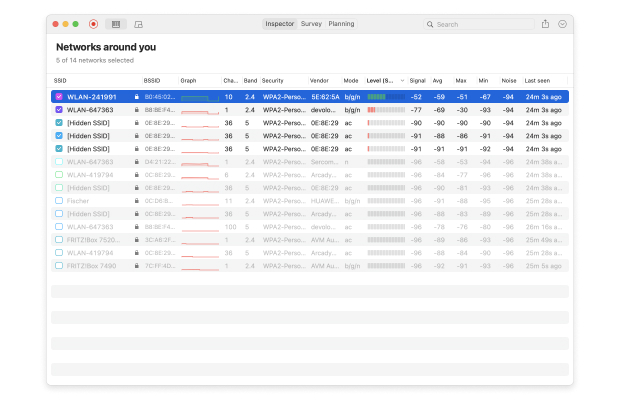AT&T Home Internet Internet Plans
AT&T customers can choose from the following plans:
| Plan |
Download Speeds |
Upload Speeds |
| AT&T Fixed Wireless |
up to 10 Mbps |
up to 1 Mbps |
| AT&T Internet 10 |
up to 10 Mbps |
up to 1 Mbps |
| AT&T Internet 18 |
up to 18 Mbps |
up to 1 Mbps |
| AT&T Internet 25 |
up to 25 Mbps |
up to 2 Mbps |
| AT&T Internet 50 |
up to 50 Mbps |
up to 10 Mbps |
| AT&T Internet 100 |
up to 100 Mbps |
up to 20 Mbps |
| AT&T Fiber — Internet 300 |
up to 300 Mbps |
up to 300 Mbps |
| AT&T Fiber — Internet 500 |
up to 500 Mbps |
up to 500 Mbps |
| AT&T Fiber — Internet 1000 |
up to 940 Mbps |
up to 880 Mbps |
| AT&T Fiber — Internet 2000 |
up to 2 Gbps |
up to 2 Gbps |
| AT&T Fiber — Internet 5000 |
up to 5 Gbps |
up to 5 Gbps |
While the number of AT&T internet plans is substantial, you shouldn’t expect them all to be available in your location. For example, AT&T’s fiber network covers predominantly large cities, which limits people in rural and suburban areas to AT&T Wi-Fi plans and DSL plans.
The problem with AT&T Wi-Fi plans and DSL plans is that they’re not symmetrical, which means they don’t offer the same download and upload speeds.
Depending on your use case, the slower upload speeds may not bother you all that much, or they may be a complete deal-breaker. For example, content creators and remote workers who often participate in remote video meetings need fast upload speeds, while regular home users who mostly use the internet for email, web, and content consumption should be fine with slower upload speeds.
Of course, AT&T internet speeds are not the only thing you should be paying attention to when choosing the right plan for you—prices are also important:
| Plan |
Promo rate |
Standard rate |
Contact |
| AT&T Fixed Wireless |
$70 |
$70 |
12 Months |
| AT&T Internet 10 |
$45 |
$55 |
12 Months |
| AT&T Internet 18 |
$45 |
$55 |
12 Months |
| AT&T Internet 25 |
$45 |
$55 |
12 Months |
| AT&T Internet 50 |
$45 |
$55 |
12 Months |
| AT&T Internet 100 |
$45 |
$55 |
12 Months |
| AT&T Fiber — Internet 300 |
$55 |
$55 |
12 Months |
| AT&T Fiber — Internet 500 |
$65 |
$65 |
12 Months |
| AT&T Fiber — Internet 1000 |
$80 |
$80 |
12 Months |
| AT&T Fiber — Internet 2000 |
$110 |
$110 |
12 Months |
| AT&T Fiber — Internet 5000 |
$180 |
$180 |
12 Months |
Not included in the table above is the unskippable $10 AT&T router rental fee that comes with all AT&T Wi-Fi plans and DSL plans, or the installation fee ($35 for DIY installation and $99 for professional installation).
You should also know that only AT&T fiber plans don’t have any data caps. DSL plans are capped at 1 TB, while the fixed wireless plan is capped at just 350 GB. Expect to pay more or have your speeds throttled if you exceed the limit.


